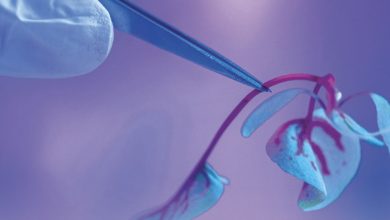AGRICULTURE SECTOR
SMALLHOLDER DEVELOPMENT
Akila Wijerathna outlines the impact of urbanisation on smallholder farmers
Urbanisation is the most impactful of humans’ environmental transformation, resulting in widespread changes to the structure and functioning of ecosystems, with direct and indirect negative impacts on agriculture systems.
Agriculture is arguably Sri Lanka’s most important sector. Smallholder farmers, who comprise most agricultural enterprises, also have a vital role to play in meeting the Sustainable Development Goals of achieving food security, promoting sustainable agriculture and securing productive employment for citizens.
However, rapid urbanisation is draining rural areas of youth and talent, leaving such farmers without the skills needed to increase output.
In developing economies, agriculture often employs the largest share of the workforce while contributing the least to GDP when compared to the industry and services sectors.
The reasons for low productivity are numerous: land fragmentation, lack of post-harvest infrastructure, low technology utilisation, weak market links, and absent or inefficient markets, information and knowledge asymmetries. This is exacerbated by overall socioeconomic structural deficiencies such as a lack of access to finance and crop insurance.
Smallholder agriculture comprises the largest segment of agricultural producers in Sri Lanka. Improved performance is necessary for inclusive development not only in agriculture but also on a more broad based level.
A UN backed report examining the ‘quiet revolution’ towards sustainable urbanisation reveals that one method to encourage mutually beneficial developments – in both urban and rural areas – is developing more efficient and inclusive value chains and food systems.
Meeting the rising urban demand for food can increase the rural poor’s incomes, most of whom derive livelihoods from small and family farm agriculture. But growing demand won’t automatically benefit small farmers so we must seek solutions that
seize opportunities and avoid the drawbacks of increasing urbanisation.
The report notes that quality concerns over locally produced food by urban residents in many developing countries often result in preference for imported varieties. Better vertical integration of domestic food value chains could offer a remedy to this scenario.
Food security is a primary concern for Sri Lankan governments as an increase in prices can have devastating consequences on those who can ill afford them. With 82 percent of Sri Lankans residing in rural areas, agriculture remains the backbone of the economy. Four-fifths of the country’s poor people are dependent on the rural sector – and almost half of the rural poor are small-scale farmers.
Tea and rubber have made large contributions to the national economy – smallholder tea farmers contribute 70 percent of the island’s total tea production while smallholder rubber growers cultivate 62 percent of the land under rubber cultivation.
The country’s livestock census offers more evidence of this: rural farmers have traditionally cared for small livestock such as cattle and goats but the added burden of caring for crops means there’s less time for this so the numbers are declining.
Women have never been strangers to farm work in Sri Lanka but the country recently witnessed a turning point in migration trends. However, female farmers lack land titles and without their names on deeds, women have been the most vulnerable to displacement.
Developing countries’ agriculture sectors face many challenges that lend themselves to technological solutions. Food demand side challenges are linked to population growth, urbanisation and demographic change, and shifting diets. Meanwhile, supply side challenges are related to labour – such as ageing farmers, rural to urban migration, capital, natural resources and technology.
While political and social solutions address some challenges, experts generally agree that innovations have great potential.
An example of this is the Green Revolution, which saw many large Asian countries increase yields with new rice and wheat varieties, and agricultural inputs, in the 1960s. If not for the positive impacts of these disruptive innovations, Asia would have lacked the food security necessary for economic development.
Agriculture is strongly influenced by the Fourth Industrial Revolution with agricultural technology representing the milieu of exciting new technologies such as drones, sensors and intelligent robots. In addition, there are tools developed through financial services technology to help farmers access credit and markets.
Smallholders produce 70 percent of the world’s food but are particularly vulnerable to climatic and economic shocks with many living from one harvest to the next. Poor harvests or sudden and massive reductions in price can and do have catastrophic effects.
In the wake of ongoing food crises, everyone acknowledges that the sector needs developing. The question we face is how?






